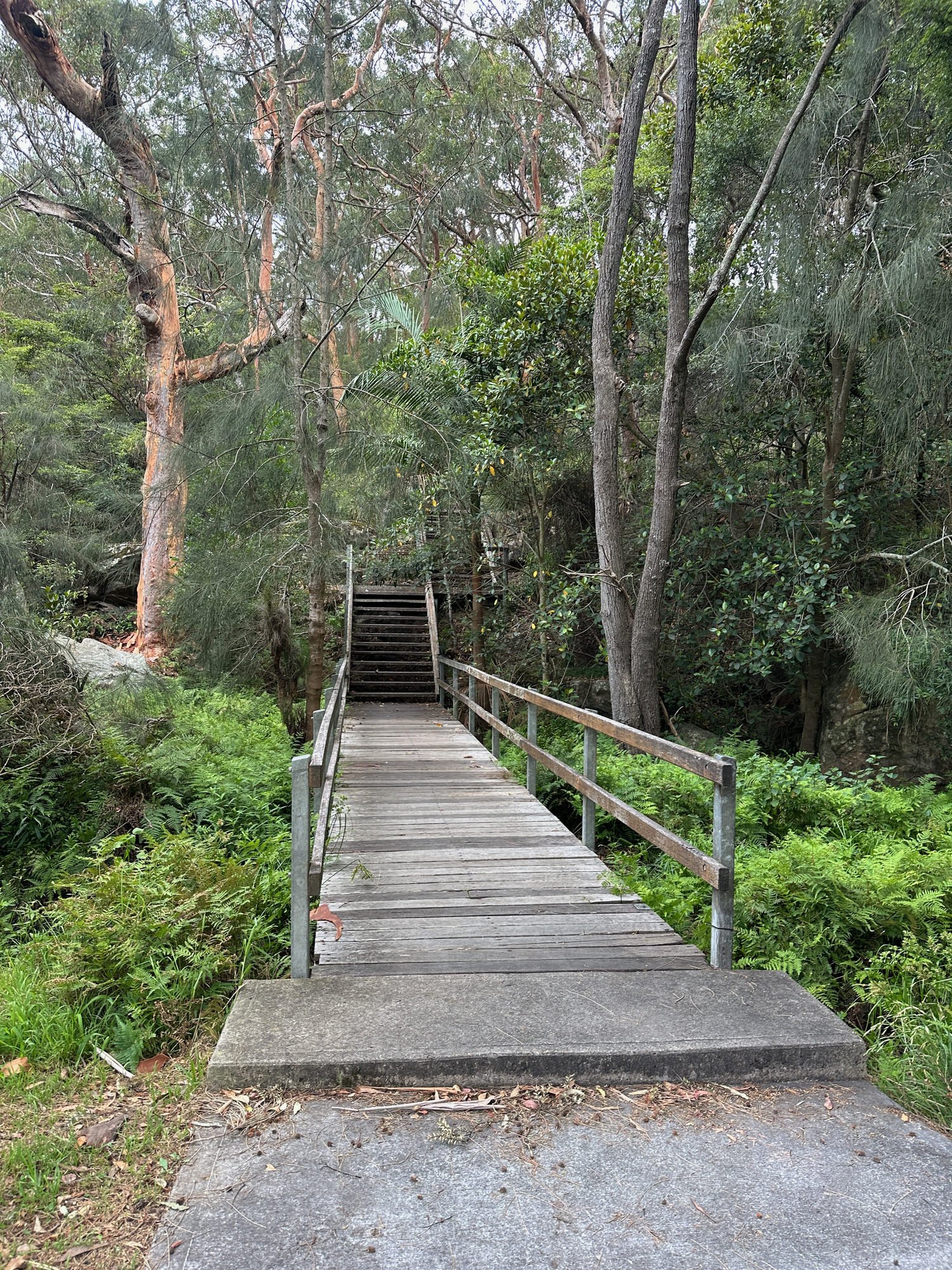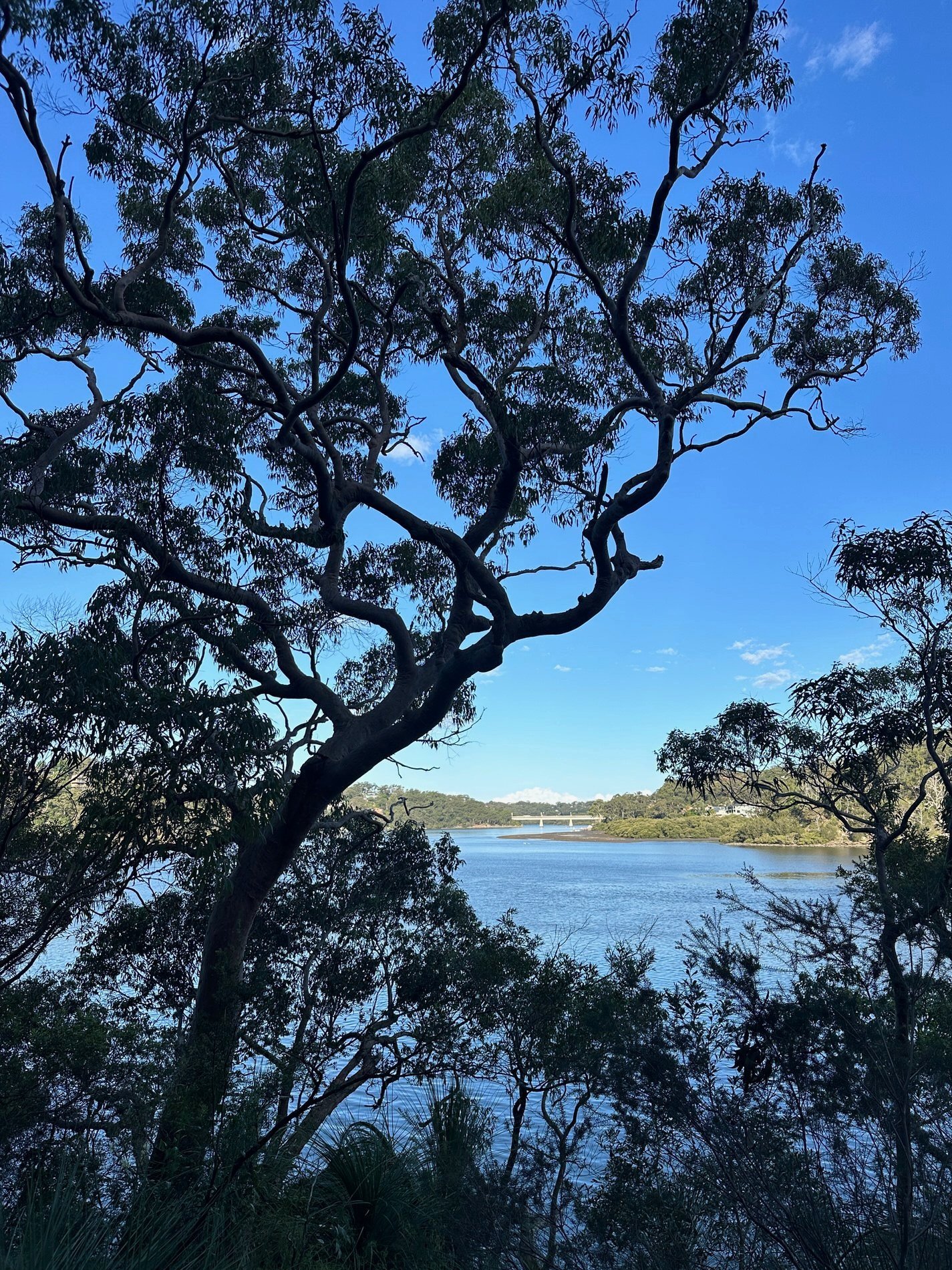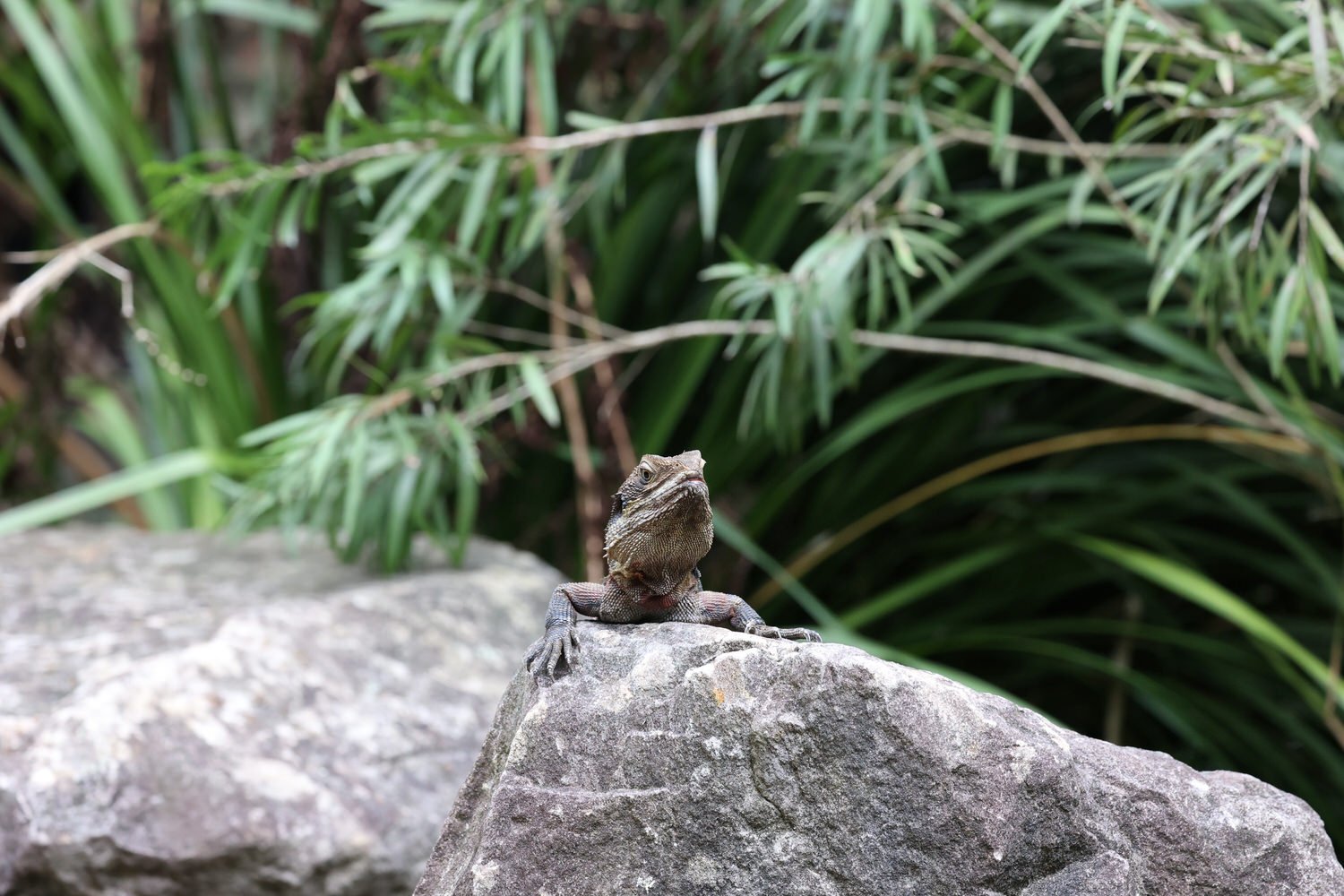Lime Kiln Bay & Oatley Park Loop
This walk has a little bit of everything - bush, beach, mangroves, wetlands and one of the best playgrounds I’ve ever seen. It’s a great walk for lovers of wildlife and wildflowers. It’s also well suited to families and can be cut down or adapted to suit little feet or less able walkers.
A few tips
The trail is not very well signposted so check the map carefully before setting out, or better still, use the live map you’ll find at the end of this post.
Toilets and water are available in the first half of the walk but scarce to non-existant later.
Mosquito spray is recommended if you’re walking near dawn or dusk, especially around the mangroves.
There’s quite a but of shade, especially in the bush but a hat and sunscreen will be good for the exposed bits.
Parts of the walk can get muddy and slippery after rain so keep this in mind when choosing footwear.
If it’s warm, you might want to pack swimmers. Oatley Baths is a small shark-netted swimming area. (Water clarity and quality varies.)
This trail is best accessed by car. To get there by public transport you’ll need to take the train to Oatley Station. From there it’s about a half hour walk to Oatley Park.
The walk outlined above starts from the bridge over Lime Kiln Wetlands. Park in Jinna Road or Pamela Avenue and take the path through Yawolloh Reserve to get to the bridge. (Note: There is parking elsewhere along the loop so you could choose a different starting point.)
Headland Trail to Oatley Baths
From the bridge, follow the shared pathway around to the right. You’ll see some stairs in front of you as the road curves - don’t take them, unless you want to walk the trail in the opposite direction. Instead, veer to the right and follow the roadway for about 500 metres. You’ll come to some steps on your right, (look carefully, they’re easy to miss) which will take you onto the track that winds around the headland.
The Headland Track, is actually a circular bush trail - A smaller loop inside the big loop walk that this walk takes. If you’re short on time, this shorter walk is a great alternative. The track is mostly level, with some uneven, rocky sections and some stairs.
The track overlooks the Georges River and on a sunny day when the birds are singing and the wildflowers are out, it’s magical. But on any day, it’s pretty special which means it’s a popular route for walkers and runners, especially on the weekend. So to best enjoy the serenity of the trail, opt for a weekday if you can.
As you walk, look up to the tall Angophoras, home to many nesting birds and possums. Note also, the large sandstone outcrops that once provided shelter to the Bidjigal people of the Eora nation, the first inhabitants of this land.
Looking down on the river, you might see the remnants of old oyster beds along the opposite shoreline. Commercial farming started here in the late 19th century and continued until 1994. Oysters grow naturally along the river and were first harvested by the Bidjigal people and later by settlers to the area. In the early days of the colony oyster shells from Aboriginal middens were burnt here in kilns to produce lime for use as mortar in buildings. This is how the bay got its name.
As the track winds around you’ll get views to Lime Kiln Bay and Lugarno on your right and across to the old Como Bridge with Oyster Bay in the distance.
On the other side of the headland is Jewfish Bay and stairs leading down to the water and Oatley Baths, dilineated by the shark net enclosure suspended not far from the shoreline. Oatley Baths has been home to the Oatley Amateur Swimming Club since 1927.
So, yes you can swim here and many people do and clearly have for years. (Change rooms and toilets are nearby.) But signs warn caution, especially after rain when the water can become mirky and contaminated with pollutants.
The Castle to Oatley Bush Park
Just up from the beach, and slightly off track you’ll find a structure known as The Castle.
A little at odds with its surrounds, The Castle resembles the kind of tower you may find in an old English castle. It was built during the Depression years as part of an unemployment relief scheme. First used as a kiosk, it now serves as a picnic and barbecue area. Take the ramp up to the top for filtered views over the river.
Head back down towards the sand and onto the foreshore path to continue the walk. The path overlooks the water for a while until it climbs and turns back into the bush.
Not far in you’ll come to a road. This road leads into the park from the main entrance*. Cross the road and continue along the bush path on the other side. The path winds through the bush, close to a football oval (and toilets) at one point, and on to Oatley Bush Park Playground. If the track is muddy, you could walk along the side of the road until you get to the playground.
Oatley Bush Park Playground to Frog Hollow
Oatley Bush Park Playground is the kind of playground I wish I’d had access to when I was a kid. It has a 12-metre play tower and slide, flying fox, swings, sandpits and more. Adjacent to the playground are shelters and picnic furniture. The playground sits beautifully in the bush landscape. It opened in 2019 and sits on the site formerly known as Steamroller Park (The old steamroller is still there.)
Just beyond the playground is a bush path that takes you off the road and deep into the bush. Keep half an eye on the map here as you follow the meandering trail down into the clearing known as Frog Hollow.
The bushland in this area and the wetlands up ahead are home to some of the many species of birds that live and hunt in Oatley Park. When I was last here, a birding enthusiast pointed out a Powerful Owl to me. It’s one of two I’m told that nest annually near Frog Hollow so look out for them.
Return to Lime Kiln Bay
Beyond Frog Hollow at the lowest point, are more wetlands and mangroves which tend to be stagnant and can be a little smelly. The ducks and other waterbirds didn’t seem to mind but this is an area where you might want to have some mosquito spray handy, especially late in the day.
Cross the creek via the bridge and then head along the bush track, again consulting the map as the track goes off in a few directions.
When you see the golf course you’ll know that you’re not far from the end of the walk. Turn left where you see the plant equipment at the corner of the golf course and continue on the track to the mangroves.
The boardwalk track over the mangroves is a nice way to end the walk. Depending on the time of day, the mangroves can be very pretty, sparkling with dappled sunlight. When the light is low though, they can be just a little bit eerie, the close canopy overhead adding to the mood.
But whatever the weather or time of day, the boardwalk’s platform affords a good view of the mangrove ecosystem - the mud, the roots, the crabs and the foraging birds.
And there’s more wildlife up ahead at the walk’s end. Up one set of stairs and down another to finish where you started, at the foot bridge overlooking Lime Kiln Bay.
Wildlife and Wildflowers
The best part about this walk, for me at least, is the abundance and variety of native fauna and flora.
Mammals recorded in found in the area include Ringtail and Brushtail Possums, Echidnas, Grey Headed Flying Foxes and other small bats. A variety of lizards are here too as well as a few snakes, and there are frogs, crabs and many other small creatures besides.
As far as birds go, this area is a hotspot. According to eBird over 140 species have been identified in Lime Kiln Bay Reserve and Wetlands, and almost as many in Oatley Park. Species run from Tiny Silvereyes and Fairy-Wrens through to large raptors and owls.
The prolific bird life is no doubt helped along by the large variety of trees, shrubs and native flowers present, especially in Oatley Park.
Large trees include Coastal Angophoras, Sydney Peppermints, Scribbly and Red Gums. Among the smaller trees and shrubs, Wattle is abundant and you’ll likely see Banksias, Christmas Bush and Blueberry Ash. Throughout the year, various wildflowers help to colour the bush and feed the birds. If you want to know went to see what in Oatley Park, the Oatley Flora & Fauna Conservation Society has put together a handy list of Seasonal Blooms.
*Among the mostly native trees in Oatley Park is one significant exotic specimen. Near the Oatley Park Avenue entrance to the park, stands a large pine tree, grown from the pine cones of a tree on the Lone Pine Battlefields, Gallipoli. There are plaques at the base of the tree detailing its significance.





















